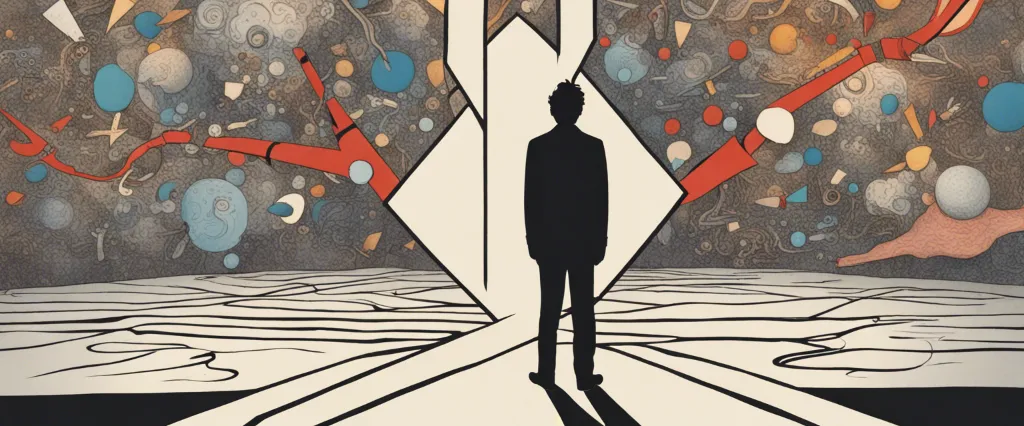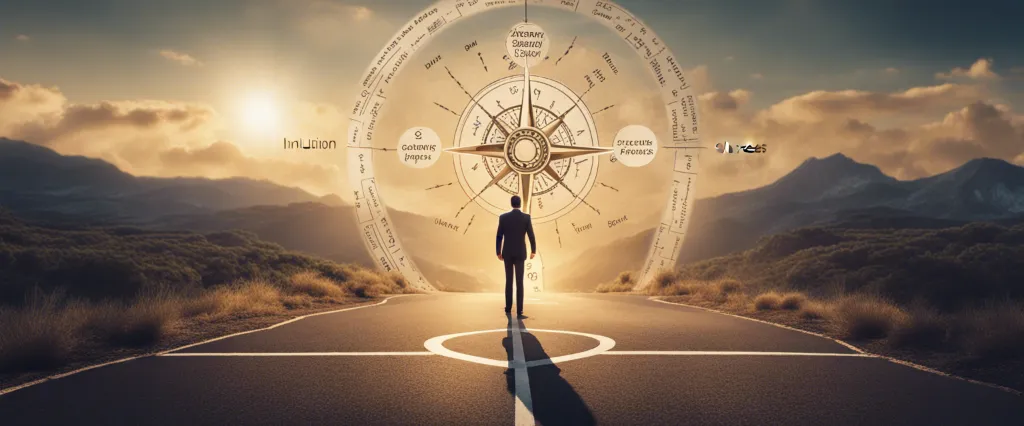In his acclaimed book “Linchpin“, renowned author and entrepreneur Seth Godin challenges traditional notions of work and reveals the essential qualities required to succeed in today’s ever-changing world. Godin, a respected marketing guru and bestselling author of numerous insightful books, including “Purple Cow” and “The Dip,” has gained a reputation for his thought-provoking ideas and unconventional perspectives on business and creativity. Through “Linchpin,” Godin examines the importance of becoming an indispensable “linchpin” in any field, and offers practical advice and inspiration for individuals seeking to thrive in the era of the connection economy.
The Age of the Linchpin
The term linchpin refers to individuals who stand out in their field, possess unique skills, and bring exceptional value to their work. This summary highlights key ideas from the book about the linchpin’s role in the modern world of work.
In this age, traditional job roles are becoming obsolete. Companies are seeking individuals who can think creatively, solve complex problems, and bring innovative ideas to the table. The linchpin is the driving force behind this change, as their unique abilities enable them to become indispensable. They don’t just follow instructions or complete tasks; they go beyond what is expected and add significant value to their work.
Linchpins are characterized by their emotional intelligence, ability to build strong relationships, and willingness to take risks. They are not afraid to challenge the status quo or propose new ideas. They are self-directed, accountable, and continuously push themselves to grow and learn.
Godin emphasizes the importance of embracing one’s artistic side, regardless of their field. Linchpins are artists in their work, bringing passion, creativity, and a human touch to everything they do. They are not limited by job titles or job descriptions; instead, they actively seek opportunities to make a difference and leave their mark.
To thrive in the Age of the Linchpin, individuals need to develop a mindset of continuous improvement and entrepreneurship. They need to become indispensable by going beyond what is expected, bringing unique skills to the table, and becoming valuable contributors to their organizations.
It is a call to action for everyone to embrace their inner linchpin, to take risks, and to bring their unique talents and creativity to the forefront in order to thrive in the modern world of work.
Becoming Indispensable
Godin argues that in today’s competitive job market, being average is no longer enough to succeed. The key to professional growth and fulfillment lies in becoming indispensable. He believes that everyone has the potential to become a linchpin, but it requires a shift in mindset and a willingness to deviate from traditional norms.
To become indispensable, Godin suggests embracing and nurturing our unique qualities and talents. He emphasizes the importance of developing a creative, artistic side and tapping into our emotions. In a rapidly changing world, he argues that we must be comfortable taking risks and remixing ideas, rather than relying on a set formula for success.
Moreover, Godin highlights the significance of delivering remarkable work and building strong connections with people. By consistently exceeding expectations, going above and beyond, and fostering genuine human relationships, individuals can carve out their own niche and become indispensable.
Throughout the book, Godin encourages readers to overcome fear and embrace change, promoting the idea that by becoming indispensable, we not only enhance our own professional growth but also contribute to the betterment of the organization and society as a whole.
The Resistance and the Linchpin
According to Godin, the Resistance is a manifestation of our fear and self-doubt. It thrives on our desire to fit in and avoid taking risks. It discourages us from stepping out of our comfort zones and pursuing our creative passions. The Resistance convinces us that we are not talented enough, not worthy enough, or that the timing is not right.
Godin argues that we can overcome the Resistance by becoming “linchpins.” A linchpin is an individual who goes above and beyond, brings unique value, and refuses to be easily replaced. Linchpins are indispensable in their fields because they harness their creativity, take risks, and make a significant impact.
To become a linchpin, one must embrace their authentic self, cultivate their unique talents, and pursue their passions wholeheartedly. Godin points out that being a linchpin doesn’t require being an artist or holding a specific job title; rather, it is a mindset and approach to work and life.
In the book, Godin provides strategies and insights on how to overcome the Resistance and become a linchpin. He explains that success lies in embracing uncertainty, understanding that failure is an inevitable part of the journey, and consistently pushing boundaries to create remarkable work.
By defeating the Resistance and embracing our own uniqueness, Godin believes that we can make a significant impact in the world and create a life of purpose and fulfillment.
Thriving in the New World of Work

Godin argues that traditional industrial-era work models, which valued conformity and compliance, are no longer effective in today’s fast-paced and ever-changing economy. He emphasizes that individuals must be willing to embrace their unique abilities and bring their whole selves to their work. Instead of relying on specific job titles or predetermined structures, the linchpin focuses on creating value through creativity, emotional labor, and continually learning and adapting.
To thrive in the new world of work, Godin outlines several key principles. Firstly, he urges individuals to develop their emotional intelligence and become better at understanding and connecting with others. This involves cultivating empathy, fostering relationships, and being able to collaborate effectively.
Secondly, Godin emphasizes the importance of embracing and managing uncertainty. In a constantly evolving business environment, the ability to adapt and handle ambiguity is crucial. He encourages individuals to take risks, experiment, and pursue their own unique path.
Lastly, Godin stresses the significance of continuously learning and contributing to the growth of oneself and others. He emphasizes the power of generosity, offering value and support to colleagues and the wider community.
It emphasizes the need to embrace one’s unique abilities, develop emotional intelligence, adapt to uncertainty, and continually learn and contribute. By embodying these principles, readers are encouraged to redefine their roles, create value, and ultimately thrive in their chosen fields.
Art and the Linchpin
He argues that in today’s increasingly competitive and rapidly changing world, simply following instructions and fulfilling the requirements of a job is no longer enough to succeed or stand out. Instead, individuals need to tap into their innate creativity and embrace their artistic abilities to become indispensable.
Godin defines a linchpin as someone who brings unique value to their work and organization, someone who is not easily replaceable. He emphasizes that everyone has the potential to be a linchpin by embracing their creativity and thinking differently. However, the fear of failure, conformity, and societal conditioning often holds people back from fully unleashing their artistic abilities.
According to Godin, art is not limited to traditional forms such as painting or music. Art can be found in any human endeavor, whether it’s designing a website, solving a complex problem, or even interactions and connections with others. He encourages individuals to strive for mastery in whatever they do, to constantly innovate, and to bring their unique perspective to their work.
Through personal stories, examples, and practical advice, Godin challenges readers to become linchpins in their own lives and careers. He urges individuals to let go of the fear of criticism and rejection, to embrace uncertainty, and to continuously improve and learn. By doing so, he argues that individuals can become indispensable in their organizations, create remarkable work, and find fulfillment and success in their lives.
The Gift Economy
Godin argues that in today’s rapidly changing world, simply following instructions and fitting into predetermined roles is no longer enough. To thrive and become indispensable, individuals need to embrace their unique qualities and make a conscious effort to bring their best work to the table. This is where the gift economy comes into play.
According to Godin, the gift economy involves giving beyond what is expected, contributing knowledge, creativity, and empathy to enrich the lives of others. By consistently going above and beyond, individuals can stand out and create value that is difficult to replicate. It is about making connections, challenging the status quo, and bringing forth groundbreaking ideas that drive organizations forward.
In the gift economy, individuals are not necessarily driven by monetary rewards, but rather by the fulfillment that comes from making a difference. By generously sharing their expertise, they build trust and establish themselves as linchpins – crucial individuals who hold organizations together and are indispensable to their success.
By doing so, they can contribute their unique gifts to the world and become linchpins – indispensable individuals who change the game and make a lasting impact.
The Linchpin’s Map
The Linchpin’s Map explains that traditional factory jobs, where workers performed repetitive tasks, are becoming obsolete due to automation and outsourcing. Godin argues that the only way to survive and thrive in this new economy is by becoming indispensable and embracing the qualities of an artist. He defines artists as individuals who bring their unique creativity, emotion, and passion to their work.
According to the book, linchpins leverage their emotional intelligence, creativity, and generosity to stand out in their work. They are not easily replaceable because they bring a unique perspective, solve complex problems, and create value beyond what is expected. However, becoming a linchpin requires overcoming obstacles like resistance, fear, and self-doubt.
Godin emphasizes the importance of overcoming the “lizard brain,” which represents our primitive instincts, and embracing vulnerability to fully tap into our true potential. He encourages readers to take risks, lead with empathy, and to aim for personal growth and contribution rather than seeking external validation or a steady paycheck.

Thriving in the Linchpin Economy
The linchpin economy, according to Godin, is an era in which automation and globalization have rendered traditional jobs obsolete. In this new economy, success is no longer determined by following instructions; instead, it is defined by becoming an indispensable linchpin. A linchpin is an individual who brings unique value to their work, making themselves irreplaceable and indispensable to their organizations.
Godin emphasizes that anyone has the potential to become a linchpin. He believes that we all possess innate human creativity, which we can tap into and leverage to make a difference in our work and in the lives of others. To become a linchpin, one needs to embrace their unique abilities, develop their emotional intelligence, and continually learn and adapt in the face of change.
The book offers various strategies and insights on how to become a linchpin. Godin stresses the importance of stepping outside of one’s comfort zone and taking risks to challenge the status quo. He encourages individuals to shift their mindset from being a cog in the machine to taking ownership of their work and creating art. Godin also emphasizes the significance of building human connections, cultivating generosity, and continually honing one’s skills.
After Reading
In conclusion, Linchpin by Seth Godin focuses on the importance of becoming indispensable in the modern workforce. Godin argues that in order to thrive in the highly competitive world, individuals must cultivate their unique talents and abilities to become vital “linchpins” within their organizations. He emphasizes the need to break away from conformity and embrace creativity, self-expression, and innovative thinking. By embracing the qualities of a linchpin, individuals can bring value to their work, become irreplaceable, and create fulfilling and successful careers. Godin’s thought-provoking ideas and practical insights serve as a guide for anyone seeking to make a lasting impact and unleash their potential in today’s ever-changing professional landscape.
Book Recommendation:
1) “Shoe Dog” by Phil Knight:
This captivating memoir takes you on an incredible journey through the early years of Nike, showcasing the determination and passion of its founder, Phil Knight. Written with honesty and vulnerability, Knight shares his triumphs, struggles, and the transformative power of chasing your dreams. This book will inspire you to push boundaries, challenge norms, and embrace your own entrepreneurial spirit.
2) “Barbarians at the Gate” by Bryan Burrough:
This gripping non-fiction account unravels the dramatic story behind the leveraged buyout of RJR Nabisco, one of the biggest corporate struggles in American history. Burrough’s meticulous research and engaging narrative style bring to life the power struggles, greed, and human complexities at play in the high-stakes world of business. You’ll be enthralled by this captivating tale of ambition, rivalry, and corporate warfare.
3) “Never Eat Alone” by Keith Ferrazzi:
Building influential relationships is crucial in today’s interconnected world, and Keith Ferrazzi’s insightful guide offers invaluable advice on how to do just that. Drawing from his experiences in business and personal relationships, Ferrazzi explains the power of networking, developing genuine connections, and nurturing these relationships over time. This book will inspire you to ditch transactional networking and embrace the authenticity of building meaningful connections that benefit everyone involved.
4) “Good to Great” by Jim Collins:
Jim Collins delves into the secrets behind transforming good companies into truly great ones. Through extensive research and analysis, Collins identifies key factors and leadership qualities that drive long-term success. This book provides practical insights, actionable strategies, and inspiring examples from companies that have achieved exceptional results. “Good to Great” will challenge your assumptions and compel you to act upon your aspirations for greatness.
5) “Originals: How Non-Conformists Move the World” by Adam Grant:
In “Originals,” Adam Grant showcases the power of unconventional thinking and the individuals who challenge the status quo to effect positive change. Through compelling stories and thought-provoking research, Grant explores how to champion new ideas, manage doubts, and embrace failure. This book encourages readers to question norms, combine creativity with practicality, and become catalysts for innovation in their own lives and organizations.
These five books, including “Shoe Dog” by Phil Knight, “Barbarians at the Gate” by Bryan Burrough, “Never Eat Alone” by Keith Ferrazzi, “Good to Great” by Jim Collins, and “Originals” by Adam Grant, will broaden your perspective on business, entrepreneurship, leadership, and personal development. Each book offers unique insights and gripping narratives that will leave you motivated and inspired to take action in your own life and career.




